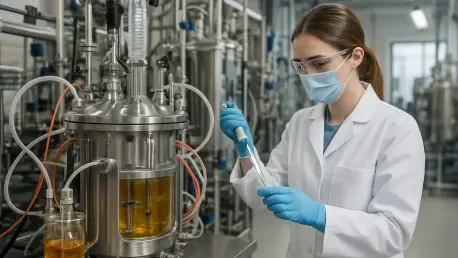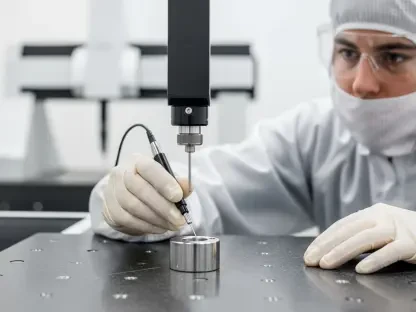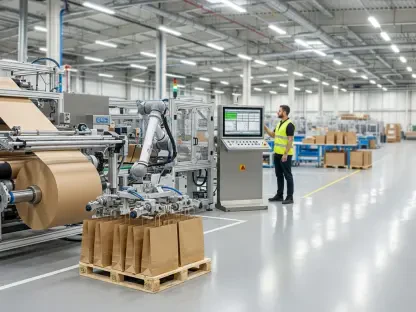Kwame Zaire, a renowned expert in the manufacturing sector, brings a wealth of knowledge spanning electronics, production management, and equipment. With a focus on predictive maintenance, quality, and safety, Kwame provides deep insights into the latest advancements in biomanufacturing. Today, he shares his thoughts on ReciBioPharm’s innovative Process Analytical Technology (PAT) platform, which is set to transform the biomanufacturing landscape.
Can you explain what the new Process Analytical Technology (PAT) platform is and its key functions?
ReciBioPharm’s new PAT platform is a cutting-edge system designed to provide real-time insights into the biomanufacturing process. It’s integrated with advanced analytical tools and proprietary software that transforms in-process data into timely, actionable insights. This enables manufacturers to speed up analytical testing, reduce quality control delays, and ultimately accelerate product delivery to patients.
What motivated ReciBioPharm to develop this real-time PAT platform?
The motivation came from the need to transform traditional manufacturing processes, which are often bogged down by delays and inefficiencies. By introducing a real-time PAT platform, ReciBioPharm aims to streamline production, enhance quality control, and make biomanufacturing more scalable and sustainable. Essentially, it’s about empowering those who are managing the manufacturing process with better, more immediate data.
How does the “QC on Wheels” system work, and what makes it mobile and modular?
“QC on Wheels” is designed to be both mobile and modular, allowing it to be easily integrated into various manufacturing environments. Its mobility comes from its compact, stackable design, which means it can be transported and deployed wherever needed without significant infrastructure. Its modular nature allows it to be customized according to specific analytical requirements, making it highly versatile.
Can you elaborate on the advanced analytical tools and proprietary orchestration software integrated into the PAT platform?
The PAT platform is equipped with state-of-the-art analytical instruments that offer multi-layered data analysis. The proprietary orchestration software then synthesizes this vast amount of data to provide real-time insights and automated feedback, crucial for optimizing production processes. By integrating these components, the platform ensures seamless operation and maximizes the value extracted from each data point.
How does the platform convert in-process data into real-time insights, and what impact does this have on quality control?
The platform continuously collects data during the manufacturing process and analyzes it using its integrated software. This immediate processing and analysis means that any deviations or inefficiencies are identified instantly, allowing for corrective actions to be taken on-the-fly. This reduces the chances of errors going undetected and leads to faster, more efficient quality control.
Could you describe the vendor-agnostic nature of the platform and why this is important?
Being vendor-agnostic, the platform can seamlessly integrate with a wide variety of existing equipment and technologies, regardless of the manufacturer. This flexibility is crucial for companies looking to incorporate the PAT platform without overhauling their current systems, ensuring a smooth transition and broader adaptability across the industry.
What are the benefits of the system being compact, stackable, and adaptable across multiple modalities?
The compact and stackable nature of the system means that it requires less physical space, facilitating installation even in environments with tight constraints. Its adaptability to multiple modalities means that it can support different types of biomanufacturing processes, enabling companies to utilize the platform for a diverse range of applications without needing separate systems for each modality.
How does the open-source modeling library support machine learning, mechanistic, and hybrid approaches?
The open-source modeling library is a resource that allows developers to apply various modeling methodologies, including machine learning and mechanistic approaches. This flexibility ensures that the PAT platform can be tailored to the specific analytical requirements of any process, driving innovations in predictive modeling and automation within the manufacturing environment.
What therapeutic applications and commercial scales can this platform handle, and how does it achieve this versatility?
The system is designed to tackle a wide array of therapeutic applications, from small-scale clinical testing to large-scale commercial manufacturing. Its versatility is rooted in its modular configuration and robust data processing capabilities, which allow it to seamlessly transition across different scales without losing efficiency or precision.
How does the PAT platform help reduce process footprint, improve efficiency, and minimize waste?
By offering real-time insights and automating much of the analytical process, the PAT platform significantly cuts down on the need for extensive physical and operational resources. This efficiency reduces the overall process footprint, ensures minimal wastage, and leads to more sustainable manufacturing practices, benefiting both the environment and the bottom line.
What decision-making advantages does the PAT platform provide to operators?
Operators are empowered with immediate access to critical process data, which enables them to make informed decisions quickly. This level of insight means that processes can be adjusted in real-time, minimizing the risk of errors and enhancing the overall quality and efficiency of production.
How do you envision this platform shifting the current approach manufacturers take toward analytical testing?
This platform is set to revolutionize analytical testing in manufacturing. By offering real-time, data-driven insights, it shifts the focus from traditional batch-based testing to a more dynamic, continuous approach. This evolution not only streamlines operations but also enhances the quality and reliability of the manufacturing process as a whole.
What technological progress and strategic partnerships has ReciBioPharm made in the first half of 2025?
ReciBioPharm has made significant strides in 2025, both in technology and strategic alliances. With the backing of a Gates Foundation grant, they have advanced their xRNA platform, aimed at revolutionizing RNA-based therapies. Moreover, their partnership with the University of Oxford has been instrumental in developing promising malaria vaccine candidates. These collaborative efforts position ReciBioPharm at the forefront of biotechnological innovation.
Can you detail the collaboration with the University of Oxford for blood-stage malaria vaccine candidates?
This partnership focuses on combining ReciBioPharm’s manufacturing capabilities with the University of Oxford’s research expertise to develop and scale up blood-stage malaria vaccine candidates. This collaborative approach is poised to fast-track the clinical development process by harnessing cutting-edge technology and shared knowledge.
What does the licensing agreement with NewBiologix entail, particularly regarding the Xcell-Eng-HEK293 cell line?
The licensing agreement with NewBiologix involves the utilization of the Xcell-Eng-HEK293 cell line, which is specifically optimized for the production of recombinant adeno-associated virus (rAAV). This cell line offers a high-yield and cGMP-ready solution, which can significantly enhance the scale and quality of viral vector production in therapeutic applications.
How does the Xcell-Eng-HEK293 cell line optimize recombinant adeno-associated virus (rAAV) production?
The Xcell-Eng-HEK293 cell line is engineered to not only increase the yield of rAAV production but also ensure that the production processes meet stringent regulatory standards. Its optimization reduces production bottlenecks and facilitates the scalable manufacture of viral vectors, which are crucial in gene therapies.
How will these developments and partnerships impact ReciBioPharm’s service offerings and market position moving forward?
These strategic advancements and collaborations enhance ReciBioPharm’s service portfolio and solidify its market presence globally. By expanding their technological capabilities and forming significant industry partnerships, ReciBioPharm is better positioned to meet the evolving needs of the biotechnology and pharmaceutical sectors, ensuring a competitive edge that is both innovative and responsive.
What is your forecast for the future of biomanufacturing technology?
I foresee a future where biomanufacturing processes are far more integrated and automated, leading to enhanced efficiency and quality. The continued evolution of platforms like PAT will be instrumental in driving this change, enabling real-time decision-making and adaptive process control. Overall, we can expect to see smarter factories that are more sustainable, responsive, and capable of producing complex biological products at scale.









